LAGI Open Call Competitions
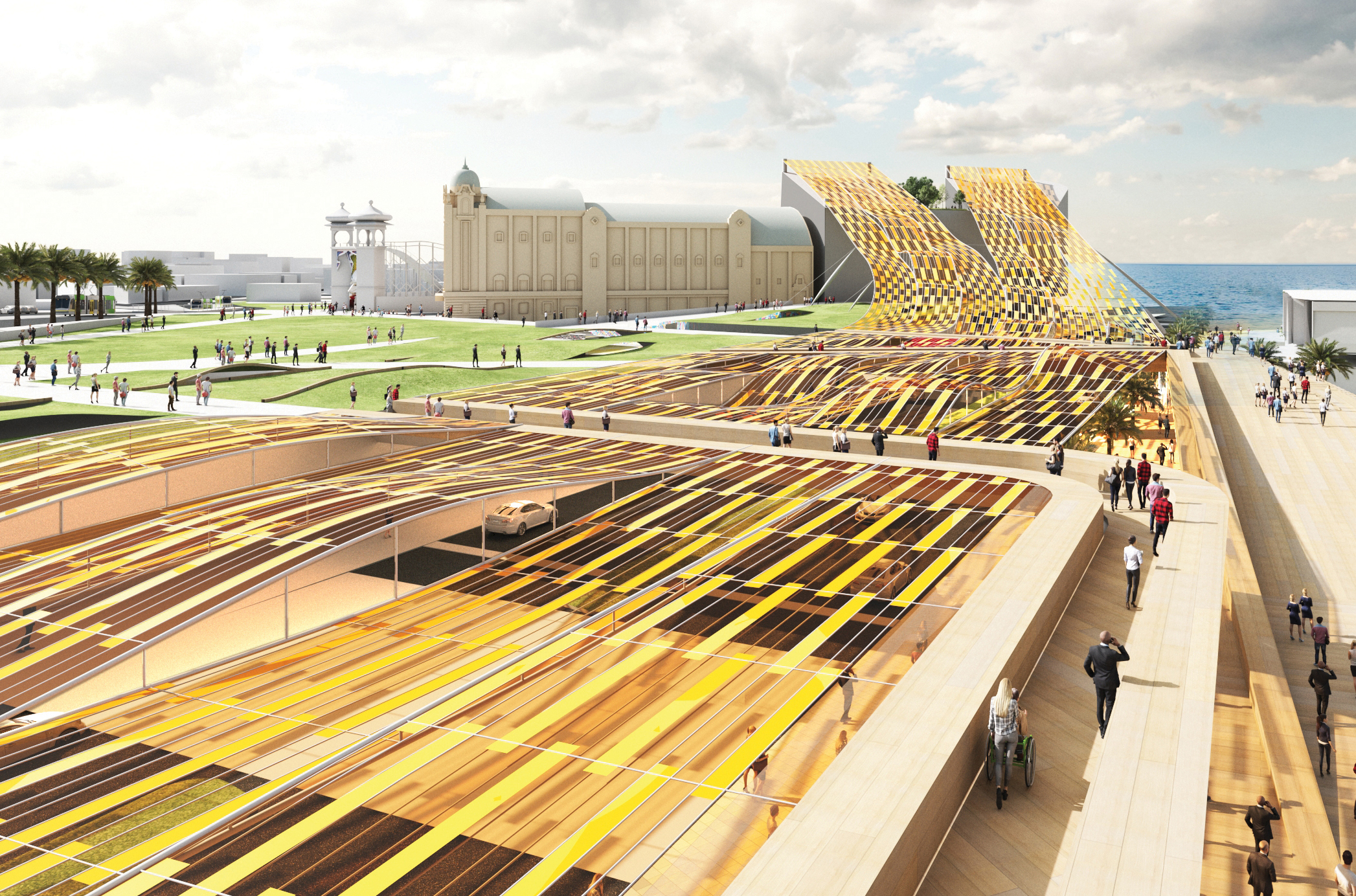





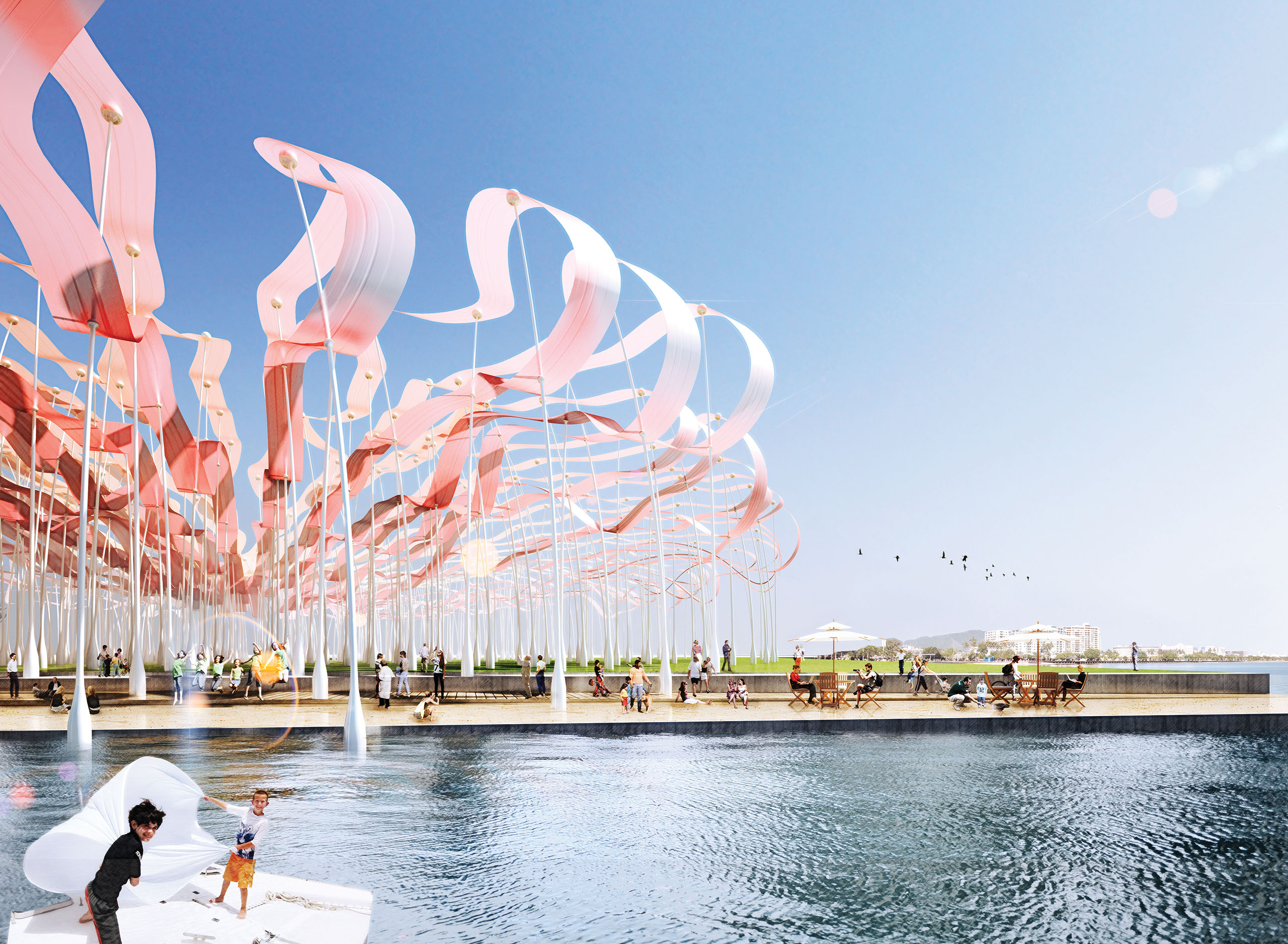
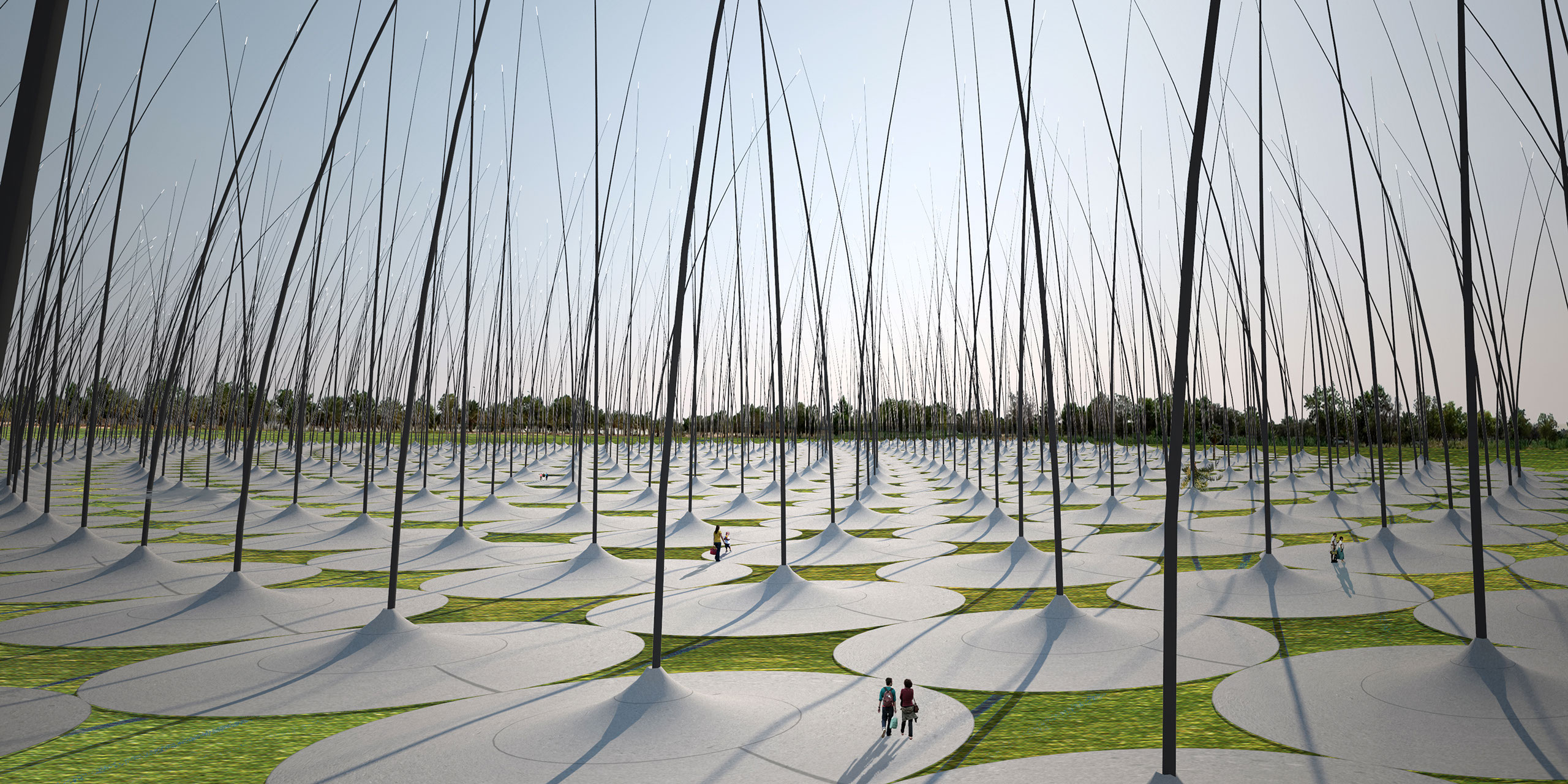

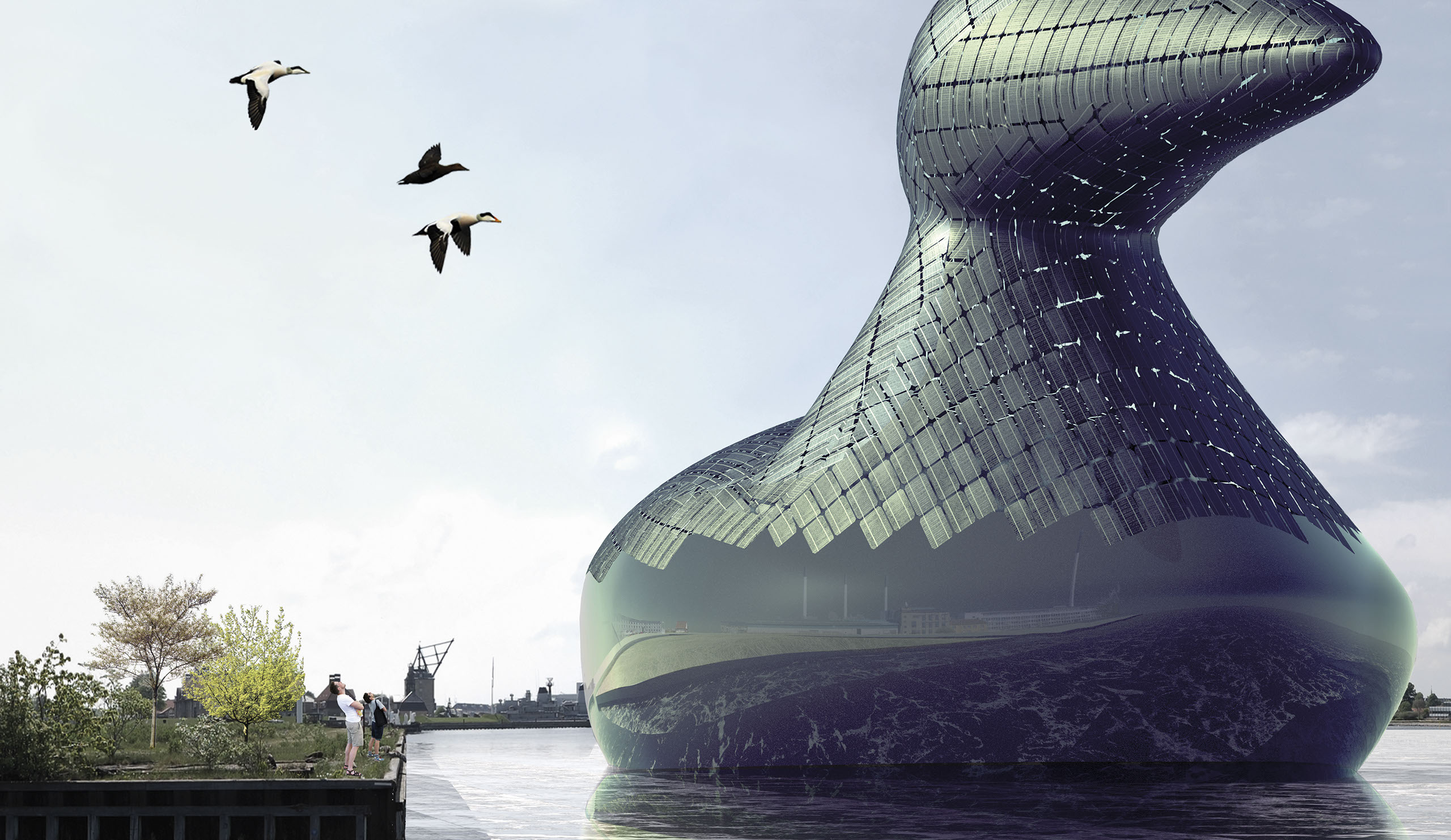

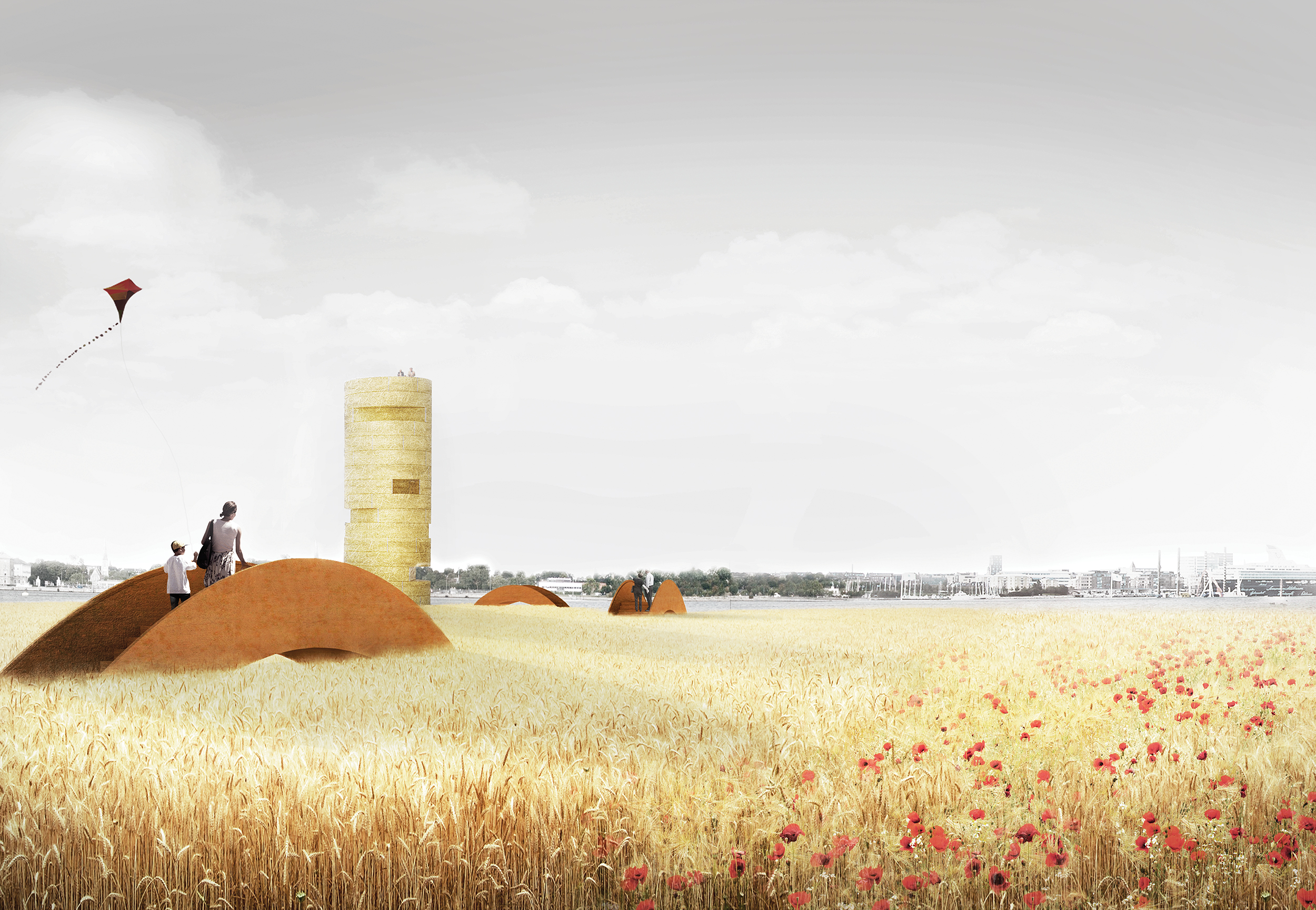
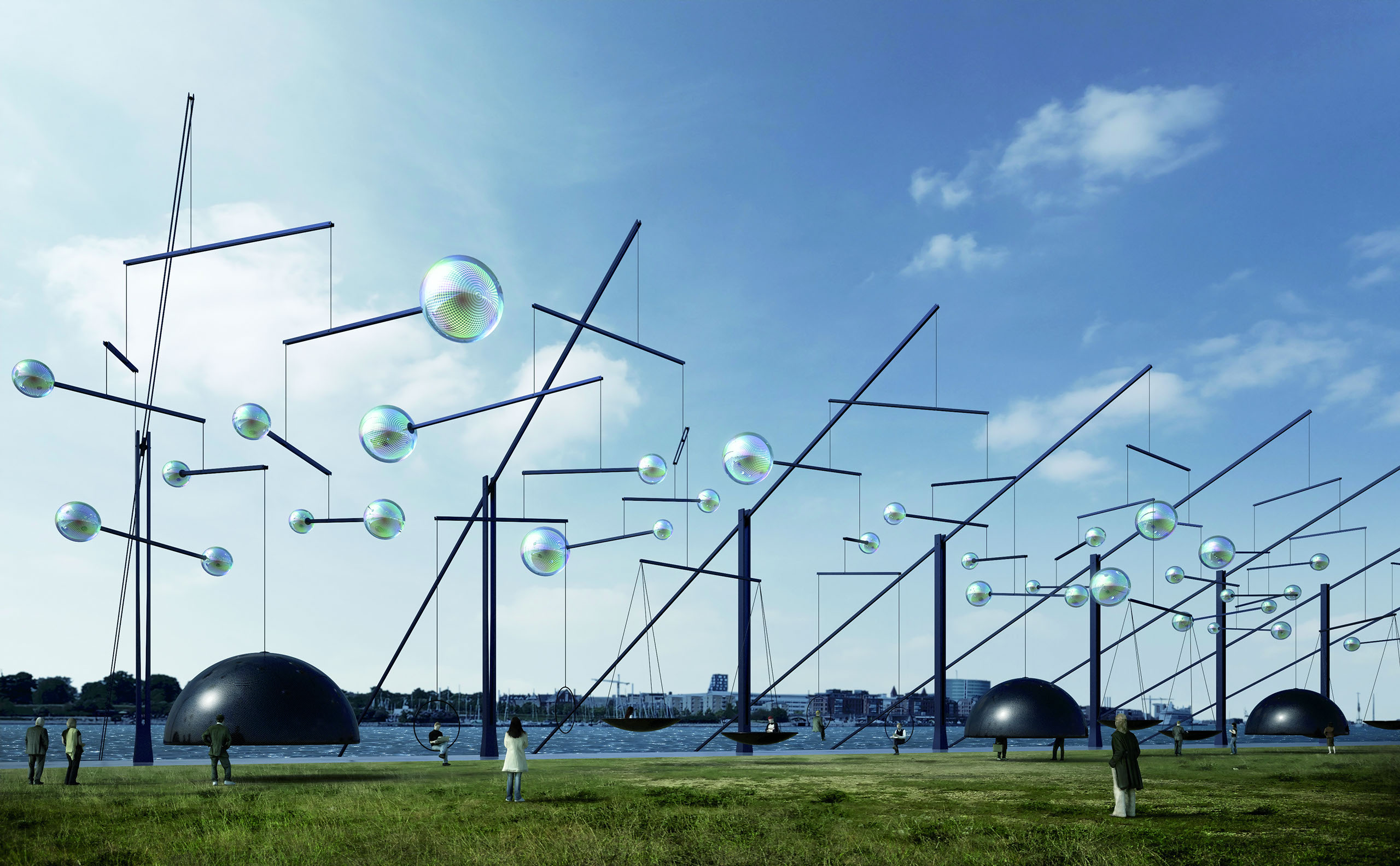

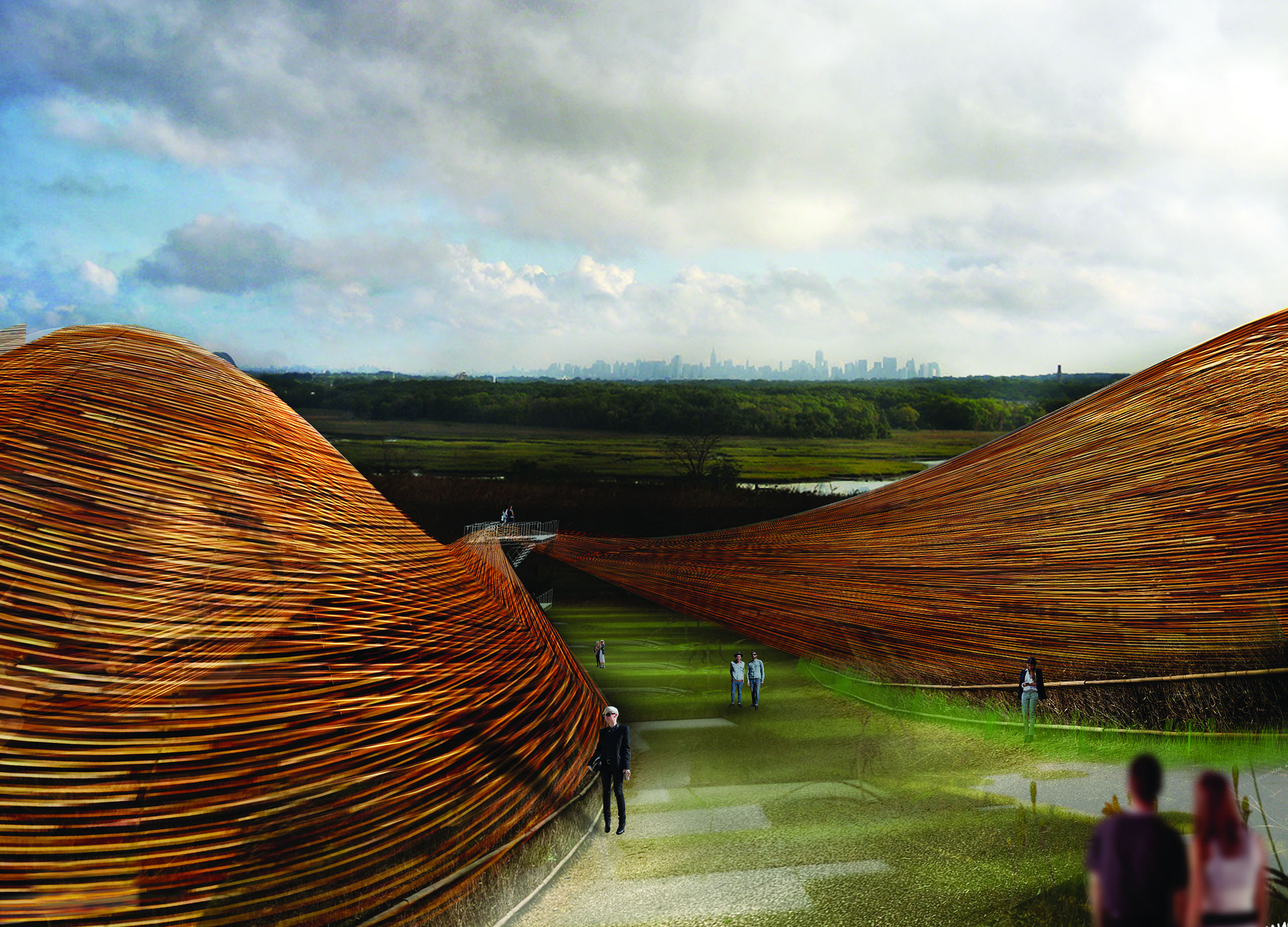















Light Up, 1st Place, LAGI 2018 Melbourne
Martin Heide, Dean Boothroyd, Emily Van Monger,
David Allouf, Takasumi Inoue, Liam Oxlade, Michael Strack,
Richard Le (NH Architecture); Mike Rainbow, Jan Talacko
(Ark Resources); John Bahoric (John Bahoric Design);
Bryan Chung, Chea Yuen Yeow Chong,
Anna Lee, Amelie Noren (RMIT Architecture Students)
Energy Technologies: flexible mono-crystalline silicon
photovoltaic, wind energy harvesting, microbial fuel cells
Annual Capacity: 2,220 MWh
Lodgers, top submission to LAGI 2020 Fly Ranch
By Zhicheng Xu and Mengqi Moon He
brings together composting toilets, reclaimed timber
waste, traditional thatching methods using local materials,
computational script-generated parametric design, and
native species shelters to provide an environmental
education venue, soil replenishment,sustainable waste
management, and habitat enrichment for Fly Ranch.
Nest, a submission to LAGI 2019 Abu Dhabi
By Robert Flottemesch
Energy Technologies: mono-crystalline bifacial PERC
solar modules
Annual Capacity: 6,633 MWh
The Clear Orb, Shortlisted Submission,
LAGI 2016 Santa Monica
Artist Team: Jaesik Lim, Ahyoung Lee, Jaeyeol Kim,
Taegu Lim (Heerim Architects & Planners)
Energy Technologies: transparent luminescent solar
concentrators, oscillating water column (OWC) wave
energy converter
Water Harvesting Technologies: solar distillation
Annual Capacity: 3,820 MWh and 2.2 million liters of
drinking water
Solar Hourglass, 1st Place Winner LAGI 2014 Copenhagen
Santiago Muros Cortés
Energy Technologies: concentrated solar power
(thermal beam-down tower with heliostats)
Annual Capacity: 7,500 MWh
The Pipe, Shortlisted Submission, LAGI 2016 Santa Monica
Abdolaziz Khalili, Puya Kalili, Laleh Javaheri, Iman Khalili,
Kathy Kiany (Khalili Engineers)
Energy Technologies: Photovoltaic Panels
Water Harvesting Technologies: Electromagnetic
Desalination
Annual Capacity: 10,000 MWh to generate
4.5 billion liters of drinking water
Beyond the Wave, a submission to LAGI 2014 Copenhagen
Jaesik Lim, Ahyoung Lee, Sunpil Choi, Dohyoung Kim,
Hoeyoung Jung, Jaeyeol Kim, Hansaem Kim
(Heerim Architects & Planners)
Energy Technologies: organic thin film
Annual Capacity: 4,229 MWh
Windstalk, 2nd Place Winner LAGI 2010 Dubai/Abu Dhabi
Darío Núñez Ameni and Thomas Siegl, with Atelier dna
Energy Technologies: piezoelectric discs, linear alternator
Annual Capacity: 20,000 MWh
LAGI 2010 exhibition at the World Future Energy Summit
United Nations Secretary General Ban Ki-Moon visits the
first exhibition of designs submitted to the biennial
LAGI design competition.
Photo by Roger White. Thank you to Masdar
for supporting LAGI 2010.
Energy Duck, a submission to LAGI 2014 Copenhagen
Hareth Pochee, Adam Khan, Louis Leger, Patrick Fryer
Energy Technologies: photovoltaic panels,
hydraulic turbines
Annual Capacity: 400 MWh
Light Sanctuary, a submission to LAGI 2010 UAE
Martina Decker and Peter Yeadon
Energy Technologies: organic thin film
Annual Capacity: 4,500 MWh
Golden Roots, a submission to LAGI 2014 Copenhagen
Ronny Zschörper, Franziska Adler
Energy Technologies: biomass, piezoelectric paving
Annual Capacity: 52 MWh
Balance / Imbalance, a submission to LAGI 2014
Copenhagen
Hideaki Nishimura
Energy Technologies: Buoy-type wave converter with
Electroactive Polymer Artificial Muscle
Sphelar® photovoltaic, piezoelectric films
Annual Capacity: 720 MWh
Solar Eco System, a submission to LAGI 2010 UAE
Antonio Maccà, Flavio Masi
Energy Technologies: photovoltaic panels
Annual Capacity: 1,000 MWh
Fresh Hills, 2nd Place Winner LAGI 2012 NYC
Matthew Rosenberg; Structural Engineering Consultant:
Matt Melnyk; Production Assistants: Emmy Maruta,
Robbie Eleazer
Energy Technologies: WindTamerTM, Carbon Dioxide
Scrubber, SmartWrapTM
Annual Capacity: 238 MWh
Explore the competition pages for details about the unique sites, submissions, competition winners, partners, supporters, and more.
The free and open LAGI international design competitions provide opportunities for creative minds around the world to reflect on the nature of energy infrastructures and what they can aspire to be in their built form. How can they integrate themselves into our cities in ways that enhance public space, educate, and inspire?
The thousands of participants from around the world have made the project successful by presenting to the world positive visions of our clean energy future.
The design brief for the LAGI design competition contains the following baseline requirements — the artwork is to capture energy from nature, cleanly convert it into electricity, and transform and transmit the electrical power to a grid connection point to be supplied by the city. Consideration should be made for the safety of the viewing public and for the educational activities that may occur on site. The design should be constructible (rather than theoretical), and it must respect the natural ecosystem of the design sites.
- Sites are chosen for their ability to provide a rich cultural context for participating teams.
- Each year we look forward to offering a unique, yet universally applicable typology that can be replicated within other similar conditions in other cities. The project has so far investigated urban gateways (2010), landfills (2012), brownfields (2014), coastal sites (2016), overlays onto a masterplan (2018) city portals (2019).
- We work closely with the site owner and local stakeholders to develop a design brief that responds to the socioeconomic and cultural needs of the local site and that responds to the unique climate conditions.
- Jurors are invited who will represent a mix between local community leaders and internationally-recognized professionals across many disciplines who bring a global design, arts, and science perspective.
- Partnerships are established with universities, utilities, municipalities, and nonprofits in the host city and the region who provide project support and assist with design brief development.
- For every competition there is a publication, multiple exhibitions and educational outreach events. The goal is to feature the innovative work of the many talented interdisciplinary teams who participate.
- In every case we create unique educational materials (often dual-language), and work closely with stakeholders and project partners to harness the conceptual beauty and message of these artworks and the sustainable technologies that they incorporate in order to engage young people in STEAM learning.
- If you are interested in bringing a LAGI competition to your city please contact Elizabeth and Robert at lagi@landartgenerator.org

Cloud Field is a top 25 submission to LAGI 2019
Abu Dhabi by Ignacio Martí and uses organic photovoltaic to generate 1,172 MWh annually.
